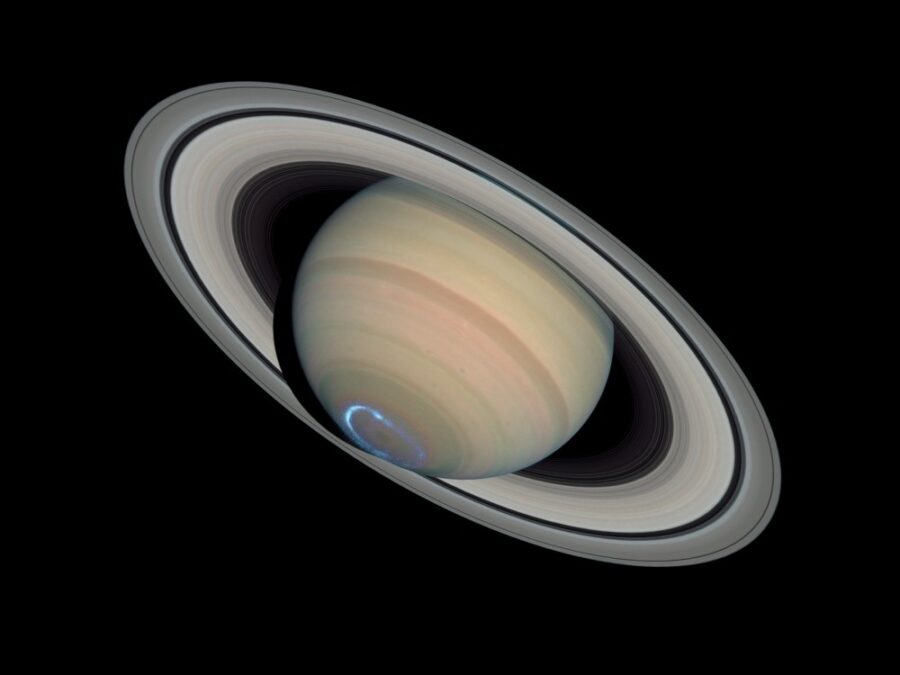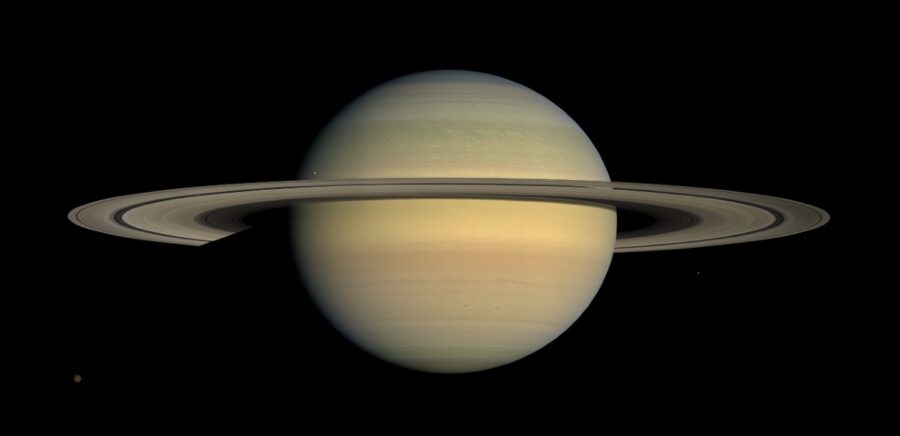Saturn’s Moon Surprises Scientists With Potential For Life
Enceladus, a moon of Saturn, was found to contain water vapor.

Saturn’s moon Enceladus is doing some interesting stuff right now, as the James Webb Space Telescope recently recorded a 10,000-kilometer-long plume of water vapor spraying from the surface. According to Science.org, this is the largest spray recorded from Enceladus, which is one-seventh the diameter of our own moon. Enceladus is an especially notable moon because it is considered a good potential location to find extraterrestrial life.
The reason this particular moon of Saturn has the potential for extraterrestrial life is because of the salty ocean located under the thick icy crust. According to the article, these plumes rupturing through the cracks in the surface could help to spread the ingredients for life found in the ocean to the rest of the planet’s system. Organic molecules such as methane, formaldehyde, and hydrogen have been observed in these plumes, which are molecules that could provide energy for microbes.
The data pulled from the James Webb Space Telescope about the plume was from 2022, and it captured the plume reaching its astounding 10,000km length in just 4.5 minutes. The plume from this moon also helps to feed one of the icy rings of Saturn, as Enceladus goes around the planet once about every 33 hours. The data also revealed 300 kilograms of water vapor into space every second, which echoes the data they collected about the plume in 2005.

Unfortunately, the James Webb Telescope didn’t see any clear indications of organic compounds, but a one-hour observation of the Saturn moon is scheduled for August of this year. Hopefully, this will reveal some new, exciting information about the moon and its giant plumes. We’ll just have to wait until then to see what they find out next.
Of course, observing a moon of Saturn through a telescope, even if it’s the most advanced telescope we have available, isn’t the same as getting data up close and personal. Which is why the proposed NASA space mission called the Enceladus OrbiLander would be exciting to see approved. The Enceladus OrbiLander would orbit Enceladus and land on the moon to collect data. Back in 2005, the Cassini mission flew through the plumes to give us a lot of the data we have now.
Jonathan Lunine, a planetary scientist at Cornell University, points out that it would be much more fruitful to send up a probe now, as our technology is more advanced. Mass spectrometry instruments and other advanced tools could be used to search for life and provide us with more data on this icy Saturn moon. Perhaps the observation period scheduled for August will find something interesting enough to get the Enceladus OrbiLander project approved.
As one of the most likely places to support extraterrestrial life in our solar system, there will undoubtedly be some more observing and studies of Enceladus in the future. Along with the salty ocean and the organic molecules, Enceladus is pulled enough by Saturn’s gravity to potentially create heat within the moon, allowing the necessary chemical reactions for microorganisms. Regardless of what happens, we’ll keep you updated on future observations of Enceladus.











